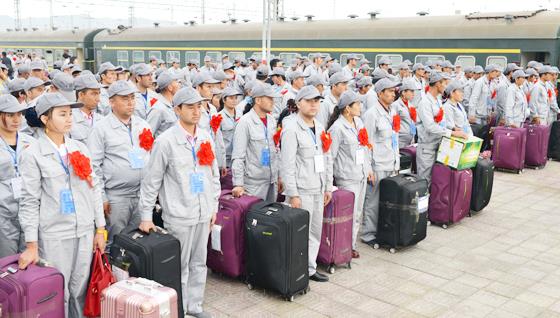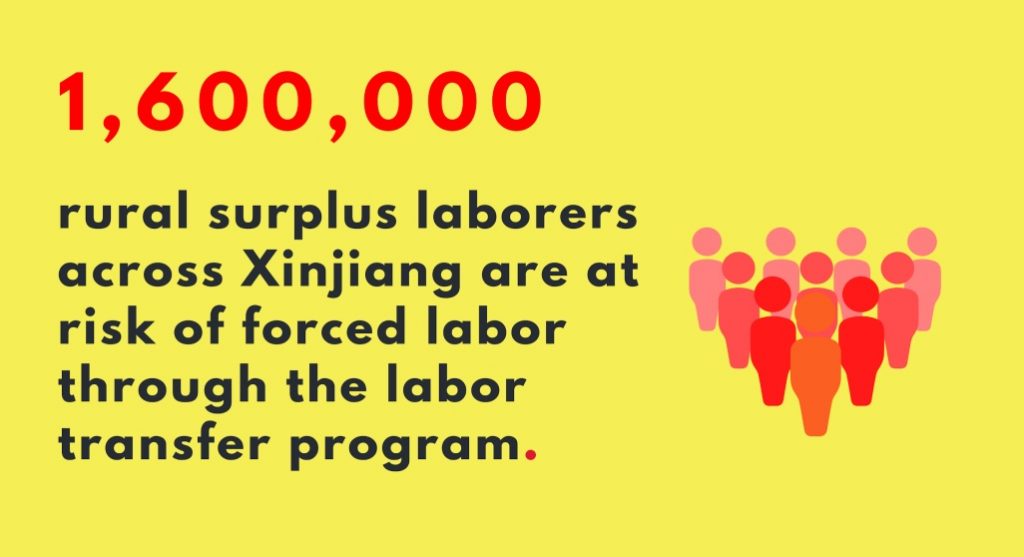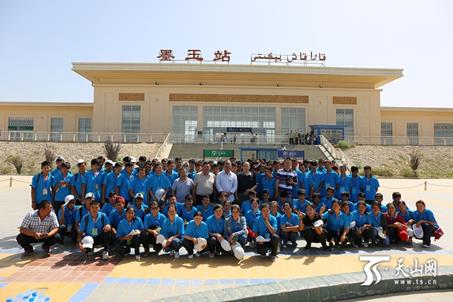- A study by Nankai University of China shows that the government labour programmes in Xinjiang are mostly designed to reduce the population density of the Uighur ethnic minority group.
- The report provides new evidence from Chinese sources that show Xinjiang’s labor transfers to other regions or provinces in China meet the forced labor definition of the ILO.
- The report indicates that labor transfers are not just serving economic purposes, but are implemented with the intention to forcibly displace the ethnic minority populations from their heartlands
- Such labor transfers of the Uighurs are designed to intentionally reduce their population density, and tearing apart homogeneous communities.
- The Chinese government denies accusations of forced labour and labour transfers in Xinjiang, saying work programmes are voluntary.
- The evidence presented in the report provides credible grounds for concluding that China is committing crimes against humanity
A study by Nankai University of China shows that the government labour programmes in Xinjiang are mostly designed to reduce the population density of the Uighur ethnic minority group. Originally titled the “Work Report on Poverty Alleviation Work of Uighur Labor Force Transfer in Hotan, Xinjiang,” (新疆和田地区维族劳动力转移就业扶贫工作报告, xinjiang hetian diqu weizu laodongli zuanyi jiuye fupin gongzuo baogao), the report was accidentally published online in December 2019 by the China Institute of Wealth and Economics at Nankai University. But was soon taken down in mid-2020.
However, a copy of the same was archived by the academic Dr Adrian Zenz. Dr. Zenz is one of the world’s leading scholars on People’s Republic of China (PRC) government policies towards the country’s western regions of Tibet and Xinjiang. The report nicknamed the “Nankai Report” now available on Jamestown Foundation’s site and seen by SamvadaWorld, brings to light the Chinese government’s campaign of repression and mass internment directed against ethnic Uighur persons in Xinjiang.
The report provides new evidence from Chinese sources, notably previously untranslated documents such as the “Nankai Report”, that Xinjiang’s labor transfers to other regions or provinces in China meet the forced labor definition of the International Labor Organization (ILO). The report develops a process-focused evaluation model for evaluating coercion at each stage of the labor transfer program.
The report exposes China’s attempts to destroy and erase their unique identity and culture of the Uighur people.

The Nankai Report, along with other Chinese academic sources, indicates that labor transfers are not just serving economic purposes, but are implemented with the intention to forcibly displace ethnic minority populations from their heartlands, intentionally reducing their population density, and tearing apart homogeneous communities.
Based on the findings presented in this report, several experts in international criminal law agree that there are “credible grounds for concluding” that Xinjiang’s labor transfer scheme meets the criteria for Crimes Against Humanity of Forcible Transfer and Persecution as defined under the Rome Statute of the International Criminal Court (ICC).
The Chinese government denies accusations of forced labour and labour transfers in Xinjiang, saying work programmes are a voluntary element of its poverty alleviation goals. However, the Nankai report said the labour transfers were also a long-term measure that “not only reduces Uighur population density in Xinjiang, but also is an important method to influence, melt, and assimilate Uighur minorities.”
“Let them gradually change their thinking and understanding, and transform their values and outlook on life through a change of environment and through labour work,” the report says.

The Nankai Report gives strong and authoritative evidence for large-scale, coercive stated-driven recruitments into labor transfers and for the securitized nature of such transfers to other provinces. It notes that these transfers are intended to “reduce labor costs” for companies.
The Report also makes it clear that poverty alleviation through labor transfer is a means to a more troubling end.
First, it bluntly states that the state took the “drastic short-term measure” of placing many Uighurs into “Education and Training Centers” (a euphemism for re-education camps).
Second, it notes that labor transfers represent a long-term measure to promote “assimilation” and “reduce Uighur population density”. The Report recommends that this program should be “initiated quietly” with “no need to overly publicize this internationally.”

Overall, the evidence in the report shows that labor transfers constitute intentional displacements of populations deemed “problematic” by the government. This is complemented by two previously unreported campaigns:
a) A large-scale transfer scheme by which hundreds of thousands of ethnic minority farmers and pastoralists transfer usage rights to their land or herds to state-run collectives for the purpose of “liberating” them to become industrial laborers; and
b) A campaign to settle 300,000 additional Han Chinese settlers in Uighur heartland regions by 2022 in order to “optimize southern Xinjiang’s population structure.”
Based on Dr. Zenz’s survey of Chinese academic research and government figures, up to 1.6 million transferred laborers are estimated to be generally at risk of being subjected to forced labor.
The evidence presented in Dr. Zenz’ report, particularly in relation to the Nankai Report, provides credible grounds for concluding that China is committing the crimes against humanity of forcible transfer and persecution against its Uighur civilian population.
The International Criminal Tribunal has held that forcible separation from one’s home and community “is by definition a traumatic experience” that can cause “serious mental harm” to the victims of these acts. The crime against humanity of forcible transfer, while perhaps not often discussed, is in no way a “lesser” crime and is as equally grave as other crimes against humanity.
